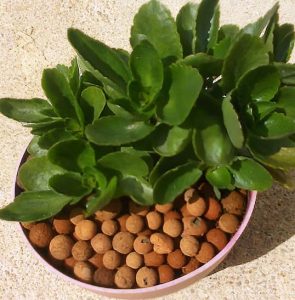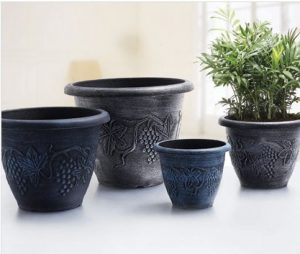Hydroculture indoor plantation is catching up gradually; they are preferred by people because they require less maintenance, they grow faster, they are healthier because they not being prone to pests and diseases, they have better oxygenation at the root zone and they have no growth of molds or other known allergens. This technique is becoming famous and being researched in depth in Germany called hydrokultur.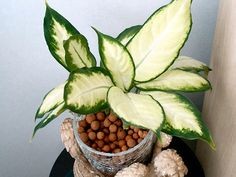
Hydroculture is a form of inert hydroponics (plant roots grown in water) and it can be grown without soil. Indoor plants can be grown with the medium of clay pebbles instead of soil. It is a lot more trouble free way of growing attractive indoor plants.
The indoor greenery always gives a good feeling; it enhances the look of a house or office. Common indoor plants are good to fight against rising levels of indoor air pollution. NASA scientists are researching on the topic further more. They are useful in absorbing potentially harmful gases and cleaning the air inside homes, hotels, offices, restaurants, hospitals etc.
If you observe closely, you will find that buildings which have good amount of plants planted inside them have a healthy ventilation systems constantly invigorating them with air from outdoors after a filtration process that removes some large particles, such as pollen, from it. Once inside, this air is augmented by a large range of indoor plants. Some well-placed greenery brightens the space and also purifies the air. The plants are also helpful in creating a more relaxing, restful ambiance in the building. It reduces stress and tensions to great extent. In a 2008 study, Dutch researchers found that hospital patients with indoor plants in their rooms recovered faster from their illnesses and reported lower stress levels than patients without them.
Indoor plants add positivity besides great looking décor. There are some beautiful houseplants that are easy to take care of and effective at increasing oxygen and clearing out toxins for cleaner breathing air, some of these are approved by NASA. Try adding one to your each room at home and your work station in office.
Hydroculture system is simpler to use because it is made up of five simple parts: clay pebbles (or a similar inert growing medium), planters, hydroculture pots, water level indicator, and plants.
Clay pebbles: They are the primary growing medium used in hydroculture systems. These expanded clay pellets take the place of soil. They are highly absorbent and are effective at retaining moisture and nutrients. They are free from soil-borne pests and diseases and they provide plenty of oxygenation at the root zone. Because of their inert nature, they give the plants a sturdy support; hence, the plants grow faster and blossom. There is another medium besides clay pebbles such as perlite, which is a form of a volcanic glass that is mined and then heated in big ovens until it ‘pops’ into a round, white material that’s used in seed-starting and potting mixtures to lighten the soil. Even perlite allows more air around the roots of plants.
Planters: They are more or less identical to any other plant pot available in market. They are made out of expensive and unbreakable plastic. You get them various shapes, size and colours and designes.
Hydroculture pot: They are snugly fitted inside the planters; the hydroculture pot comes with a groove for a water level indicator which will show you exactly how much water your plants are sitting in. The hydroculture pot contains clay pebbles and the plant.
Water level indicator: Water level indicators are a simple way to measure exactly how much water your plants are sitting in. They are tailored for use with specific hy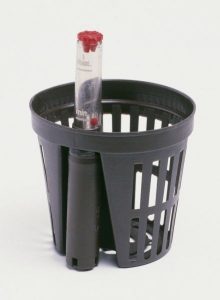 droculture pots and usually come with indicators showing the ‘minimum’, ‘maximum’, and ‘optimum’ water levels. Water level indicators show when to feed your plant. The average watering cycle for a 6” plant is probably every 2 weeks in soil. With hydroculture, the length of time between watering gets normally tripled. This can be especially helpful for people that cannot access their plants every two weeks, those who travel often.
droculture pots and usually come with indicators showing the ‘minimum’, ‘maximum’, and ‘optimum’ water levels. Water level indicators show when to feed your plant. The average watering cycle for a 6” plant is probably every 2 weeks in soil. With hydroculture, the length of time between watering gets normally tripled. This can be especially helpful for people that cannot access their plants every two weeks, those who travel often.
Plants: Peace Lily (spatifilum), Dracena, Umbrella, Nasa, Xanadu, Snake plant (mother in law’s tongue) 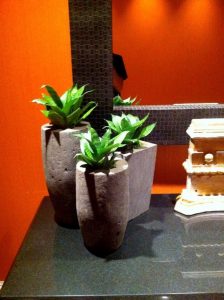 Money plant, Spider plant, Anthurium, African Violets, Cast Iron Plant, Areca Palm, Bamboo palm etc are some of the decorative indoor plants good for hydroculture. These are decorative indoor plants which add beauty to the decor.
Money plant, Spider plant, Anthurium, African Violets, Cast Iron Plant, Areca Palm, Bamboo palm etc are some of the decorative indoor plants good for hydroculture. These are decorative indoor plants which add beauty to the decor.
Overall, growing using the hydroculture method can be both a refreshing change from soil gardening and a rewarding experience when you start growing bigger, better plants. They last for longer duration; some plants live for ten years or so. This is because the roots are healthier and more robust. Healthy root systems support longer-lasting plants.
Pushpam:
In Mumbai, Milind and Yashoda Mokashi of Pushpam Landscape offer hydroculture plants and maintenance services. Established in 1986, Pushpam is an umbrella organization for landscape-related services. The organization is famous for its qualified and experienced personnel who are committed in providing the highest quality service to their clients. Mr & Mrs Mokashi are ardent plant lovers; their hobby is growing indoor ornamental and outdoor plants. They keep travelling to various countries researching about latest botanical techniques. Hydroculture is the latest arm added to Pushpam’s large array of botanical services. Please visit their facebook page: https://www.facebook.com/pushpamflowers/













































